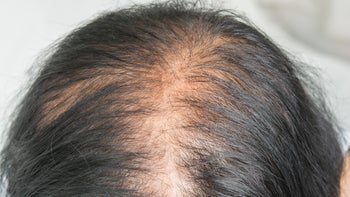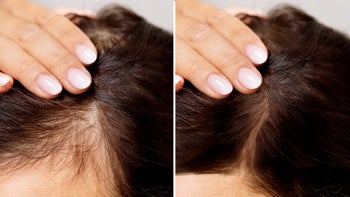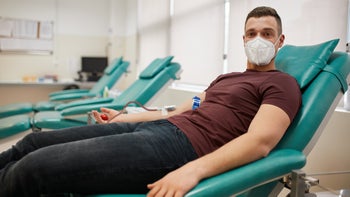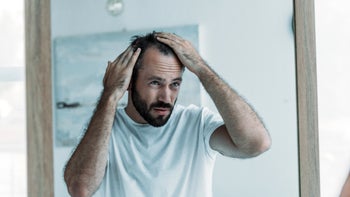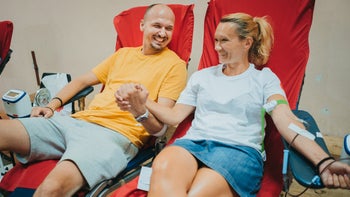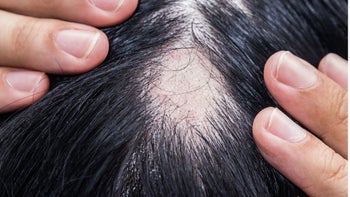
Your GoodRx Guide to Propecia (Finasteride) For Women
Key takeaways:
Propecia (finasteride) may help some women with hair loss, especially those with high androgen levels. But it’s not FDA-approved for females, and results can vary. Finasteride dosages for females ranged from 1.25 mg to 5 mg per day in clinical studies.
Finasteride side effects in women include headache, low libido, and irregular periods. It can also cause serious birth defects, so you shouldn’t take finasteride if you’re pregnant or trying to become pregnant.
Other treatments for female pattern hair loss include minoxidil (Rogaine), spironolactone (Aldactone), and platelet-rich plasma injections.Your prescriber can help you find the safest and most effective option for your needs.
Access savings on related medications
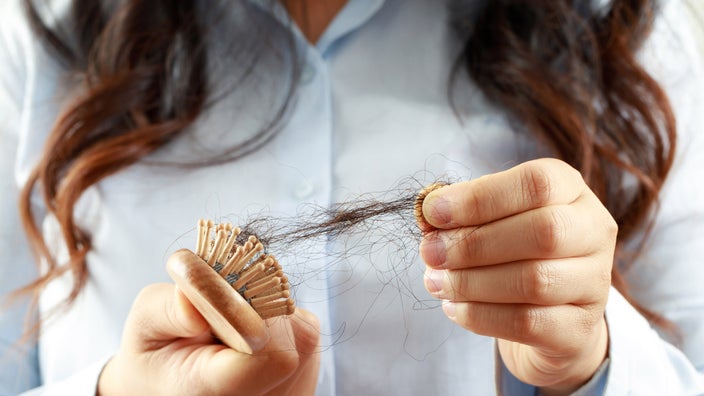
Hair loss can be a frustrating experience for women — especially when it doesn’t improve with the use of Rogaine (minoxidil) or other over-the-counter (OTC) treatments.
Propecia (finasteride) is a prescription medication that treats male pattern baldness. But what about Propecia for women? Is it effective, and more importantly, is it safe? Here, we’ll take a closer look at finasteride for women, including how it works and its effectiveness as well as possible side effects.
Does Propecia work for female pattern hair loss?
Yes. Propecia may help with female pattern hair loss. But there are some things to consider before taking it:
Finasteride (the active ingredient in Propecia) can cause serious harm to an unborn fetus. So it isn’t safe to take finasteride if you’re pregnant or trying to become pregnant.
Finasteride works well for male pattern hair loss. But there’s mixed evidence as to how effective Propecia is for female pattern hair loss compared with other treatment options (more on this later).
Propecia isn’t FDA-approved for women. So its use is considered off-label for female pattern hair loss, which can affect insurance coverage and cost.
How effective is finasteride for hair loss in women?
As mentioned, the results of studies on finasteride treatment for female pattern hair loss are mixed. Some studies showed no improvement after taking finasteride 1 mg (the typical Propecia dosage for males). Other studies showed improvement with higher finasteride doses, but most of these studies included less than 100 people, so their results aren’t as reliable.
That being said, case reports and real-life results seem to indicate that finasteride may be more effective for females than what’s been shown in clinical studies.
Finasteride seems to have better results in females with high levels of androgens, such as testosterone. This is common with hair loss caused by conditions such as polycystic ovary syndrome (PCOS) or congenital adrenal hyperplasia (CAH).
But finasteride may not work as well if high androgen levels aren’t present. In this case, finasteride is often only prescribed if other treatments aren’t effective.
What dosage of finasteride works for hair loss in women?
Since finasteride isn’t FDA-approved for women, there isn’t a set dosage that’s been proved to be safe and effective. Finasteride doses ranging from 1.25 mg to 5 mg daily were used in successful clinical studies.
Higher finasteride dosages may be more effective, but they’re also more likely to cause side effects (more on that next). So your prescriber may decide you’ll start with a low dose and increase it as needed based on how you respond.
What are the finasteride side effects in women?
Common finasteride side effects reported by females in clinical studies include:
Headache
Growth of excess body hair
Dizziness
Irregular menstrual periods
Breast tenderness
Dry skin
Mild acne
Most side effects were considered mild and faded over time. Side effects also seemed more likely in those taking finasteride prior to menopause. Let your prescriber know if you’re experiencing bothersome side effects while taking finasteride for hair loss. They may reduce your dose or change your medication to help manage these effects.
What causes hair loss in women? Learn about common causes of hair loss in women, as well as their treatments.
Postpartum hair loss: It’s normal to lose hair after pregnancy. Here’s why.
Supplements and procedures for hair loss: Learn which supplements and procedures may help with hair loss in women.
Are there alternatives to finasteride for female pattern hair loss?
Yes. There are several other treatment options that may help with female pattern hair loss. These include prescription medications, supplements, and procedures, such as:
Oral or topical minoxidil
Flutamide (Eulexin)
Spironolactone (Aldactone)
Platelet-rich plasma injections
Low-level laser therapy
Microneedling
Pumpkin seed oil
The bottom line
Propecia (finasteride) may be an option for some women with hair loss, especially those with high androgen levels. But it’s not FDA-approved for females, and results can vary. Finasteride dosages ranged from 1.25 mg to 5 mg per day in clinical studies.
Finasteride side effects can include headache, low libido, and irregular periods. It can also cause severe birth defects, so it’s not safe to take finasteride if you’re pregnant or trying to become pregnant.
Other proven treatments for female pattern hair loss include minoxidil (Rogaine), spironolactone (Aldactone), or platelet-rich plasma injections. Your prescriber can help you decide on the best treatment option for your needs.
Why trust our experts?


References
Dietary Supplement Label Database. (2021). Nutrafol women. National Institutes of Health Office of Dietary Supplements.
Endocrine Society. (2022). Congenital adrenal hyperplasia.
Fabbrocini, G., et al. (2018). Female pattern hair loss: A clinical, pathophysiologic, and therapeutic review. International Journal of Women’s Dermatology.
Iamsumang, W., et al. (2020). Finasteride and its potential for the treatment of female pattern hair loss: Evidence to date. Drug Design, Development and Therapy.
Mother to Baby. (2022). Finasteride. Organization of Teratology Information Specialists.
Ramos, P. M., et al. (2023). Female-pattern hair loss: Therapeutic update. Anais Brasileiros de Dermatologia.
van Zuuren, E. J., et al. (2016). Interventions for female pattern hair loss. Cochrane Database of Systematic Reviews.
Was this page helpful?
Related Articles
Browse medications
View AllResearch prescriptions and over-the-counter medications from A to Z, compare drug prices, and start saving.





